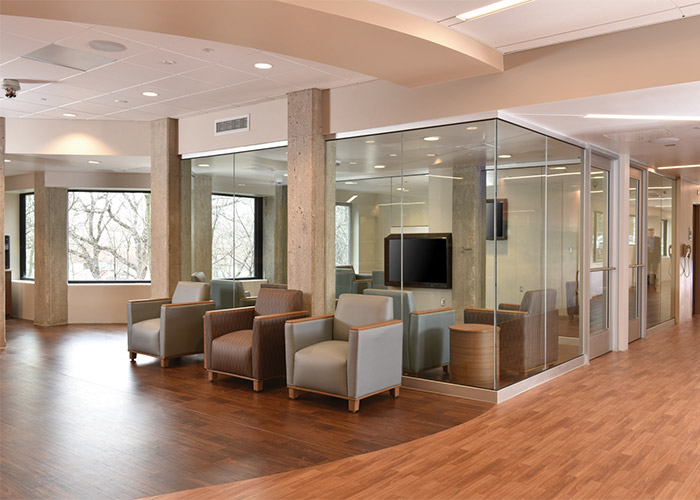Mental Health Facilities Can Help Patients Retain Dignity, Sense of Normalcy
One of the biggest hurdles that health professionals face when treating mental health patients is getting them to keep coming back.
One of the biggest hurdles that health professionals face when treating mental health patients is getting them to keep coming back.

One of the biggest hurdles that health professionals face when treating mental health patients is getting them to keep coming back.
Why would patients avoid possibly life-saving treatment? Because many mental health facilities look scary and “institutional,” with dark colors and lighting, heavy doors that lock, sterile rooms, and a feeling of extreme confinement.
At a recent health care design conference, a journalist described his struggle to find a place where he felt comfortable getting treatment for his mental health issues. The place he ended up choosing was a renovated house surrounded by lots of greenspace. Because it felt like a home, he was motivated to go there for treatment.
Designs of facilities should make the individual feel dignified, provide a sense of choice, and take cues from the hospitality industry by providing a homelike and inviting environment.
Case studies offered these suggestions:
Greenspaces such as healing gardens are an essential part of creating a treatment center that connects to nature and makes individuals feel dignified and normal. They should offer places to walk, a choice of seating (something patients can control, if they want to sit alone or interact with fellow community members), and flexible space for programming and events.
A connection to nature can:
In Healing Gardens: Therapeutic Benefits and Design Recommendations, studies showed that two-thirds of people chose a natural setting to retreat to when stressed, and 95% of people said they felt more calm and balanced after spending time outside.
There is also a need to educate staff on how to maintain these types of facilities to ensure the safety of the patients and that the facility is being used as it was intended.
For example, facilities should integrate a staff training program for their maintenance and IT staff that educates them about what are acceptable replacement materials and methods of installation. A case study showed that after two years of a facility being opened, problems arose such as replacement screws and latches being improperly installed and not tamperproof-grade, causing a safety concern. Power strips and cords utilized for computer connections in nurses’ stations were loose and accessible to patients, becoming a life-threatening hazard.
After learning some lessons, this facility implemented a staff training program and is conducting an annual maintenance inspection to keep design intent and safety intact.
Providing safe, comfortable, inviting treatment facilities can do a lot toward reducing the stigma associated with mental health. As the journalist said, it reminds patients that they, too, are worth beautiful spaces.